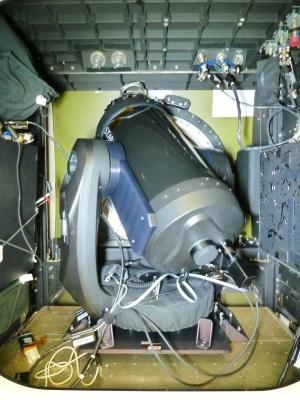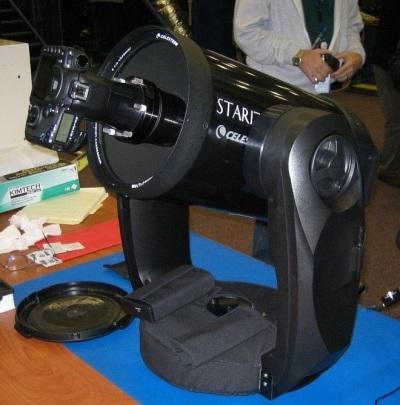Mon, Jul 23, 2012
ISERV Pathfinder To Be Installed In The Station's Destiny Laboratory
A remote-controlled Earth-observing camera system called ISERV launched to the International Space Station (ISS) aboard the Japan Aerospace Exploration Agency's third H-II Transfer Vehicle (HTV-3) Friday. Once installed, the system will be directed by researchers on the ground to acquire imagery of specific areas of the globe for disaster analysis and environmental studies.

ISERV stands for the International Space Station SERVIR Environmental Research and Visualization System. The space station provides researchers a unique perspective through global observations from space. SERVIR is a Spanish acronym meaning "to serve." Also known as the Regional Visualization and Monitoring System, the program provides satellite data and tools to environmental decision makers in developing countries. SERVIR is a partnership between NASA and the U.S. Agency for International Development (USAID).
ISERV will be installed in the Window Observational Research Facility (WORF) in the station's Destiny laboratory. The system is intended to help scientists gain operational experience and expertise and inform the design of a more capable system in the future. Ideally, a future operational system will be able to monitor disasters on Earth. "ISERV came about because officials in developing countries are sometimes unable to acquire the images they need to address environmental threats and provide post-disaster assessments," said Nancy Searby, capacity building program manager for the SERVIR program at NASA Headquarters in Washington. "The SERVIR team approached NASA's ISS and Earth Science Applied Sciences Program with the concept of acquiring the needed imagery from the ISS. The ISERV test bed payload is a result of that collaboration."
The ISERV system, based on a modified commercial telescope and driven by custom software, will use the Earth-facing Destiny science window to obtain images of Earth's surface. It will then transmit the data to scientists on the ground. "Images captured from ISERV on the ISS could provide valuable information back here on Earth," said Dan Irwin, SERVIR program director at Marshall. "We hope it will provide new data and information from space related to natural disasters, environmental crises and the increased effects of climate variability on human populations."

ISERV is the first of an envisioned series of space station Earth-observing instruments, each to feature progressively more capable sensors. Future sensors could be mounted on the exterior of the station for a clearer, wider view of Earth. ISERV development was funded as a collaboration between NASA's Human Exploration and Operations Directorate and the Science Mission Directorate's Earth Science Division Applied Sciences Program.
The team at the Payload Operations Center at Marshall is creating computer-based materials for training the space station crew to assemble and install ISERV in the WORF rack. Normal operations aboard station are set to begin in November.
(Images provided by NASA)
More News
Terminal Radar Service Area Airspace surrounding designated airports wherein ATC provides radar vectoring, sequencing, and separation on a full-time basis for all IFR and participa>[...]
Aero Linx: Utah Back Country Pilots Association (UBCP) Through the sharing experiences, the UBCP has built upon a foundation of safe operating practices in some of the most challen>[...]
From 2010 (YouTube Edition): Imagine... Be The Change... Inspire FROM 2010: One of the more unusual phone calls I have ever received occurred a few years ago... from Anousheh Ansar>[...]
(Pilot) Felt A Shudder And Heard The Engine Sounding Differently, Followed By The Engine Chip Detector Light On April 14, 2025, about 1800 Pacific daylight time, a Bell 206B, N1667>[...]
Also: AMA Names Tyler Dobbs, More Falcon 9 Ops, Firefly Launch Unsuccessful, Autonomous F-16s The Air Force has begun ground testing a future uncrewed jet design in a milestone tow>[...]
 ANN's Daily Aero-Term (05.07.25): Terminal Radar Service Area
ANN's Daily Aero-Term (05.07.25): Terminal Radar Service Area ANN's Daily Aero-Linx (05.07.25)
ANN's Daily Aero-Linx (05.07.25) Classic Aero-TV: Anousheh Ansari -- The Woman Behind The Prize
Classic Aero-TV: Anousheh Ansari -- The Woman Behind The Prize NTSB Prelim: Bell 206B
NTSB Prelim: Bell 206B Airborne-NextGen 05.06.25: AF Uncrewed Fighters, Drones v Planes, Joby Crew Test
Airborne-NextGen 05.06.25: AF Uncrewed Fighters, Drones v Planes, Joby Crew Test




